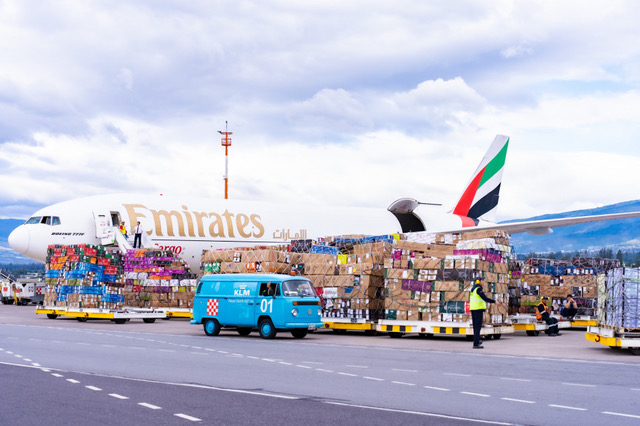- Mariscal Sucre is the 5th largest airport in the region.
- The airport with the largest percentage increase was Quito International Airport with growth of 14.12%.
- 92% of the cargo at Quito Airport consists of flowers, one of the country’s most important export products.
 The Mariscal Sucre International Airport in Quito has reached a new milestone and is 5th place in the “TOP 20 for air freight in the region”prepared by the International Council of Airports of Latin America and the Caribbean (ACI-LAC). This ranking highlights the airport’s outstanding performance in cargo traffic. It establishes itself as a benchmark in the industry at a regional level and stands out as the airport with the highest percentage growth in cargo traffic in the region.
The Mariscal Sucre International Airport in Quito has reached a new milestone and is 5th place in the “TOP 20 for air freight in the region”prepared by the International Council of Airports of Latin America and the Caribbean (ACI-LAC). This ranking highlights the airport’s outstanding performance in cargo traffic. It establishes itself as a benchmark in the industry at a regional level and stands out as the airport with the highest percentage growth in cargo traffic in the region.
In 2023, Quito Airport recorded an impressive volume of 335,407 tons of cargo transported, surpassing the 293,904 tons reached in 2022. This growth of 14.2% makes it the airport with the highest percentage increase in the region, according to ACI-LAC analysis. With this performance, Mariscal Sucre has overtaken important airports in the region, such as Jorge Chávez International Airport in Lima, Ezeiza International Airport in Buenos Aires, Rio de Janeiro International Airport, and others. At the national level, Quito Airport is the main air cargo hub in Ecuador, handling up to 90% of the country’s total air cargo.
One of the key factors for this success has been the airport’s excellent performance in terms of cargo and the facilities it provides. Quito Airport is the only one in the country and one of the few in the region to have a cargo logistics center on the airport premises. The logistics center, operated by Tababela Cargo Center, carries out important processes such as centralized consolidation of export cargo on the one hand, and customs clearance and temporary storage services for imports on the other.
Other components of the logistics chain include an international cargo terminal with 13,000 square meters of usable space, where four cargo palletizing companies operate, and the cargo platform, which can accommodate up to six wide-body cargo aircraft (four E-code and two F-code) simultaneously.
 In 2023, the expansion of the export cargo terminal was completed, expanding the cargo loading and unloading areas and the truck maneuvering area by 2,880 m2. These improvements have increased operational efficiency, optimized processes and enabled the airport’s sustainable growth.
In 2023, the expansion of the export cargo terminal was completed, expanding the cargo loading and unloading areas and the truck maneuvering area by 2,880 m2. These improvements have increased operational efficiency, optimized processes and enabled the airport’s sustainable growth.
An increase in cargo volumes is expected in 2024. A notable example was the peak season on Valentine’s Day 2024, which saw a historic record of 26,466 tonnes of cargo transported, an increase of 17.3% compared to the same season in 2023. Currently, the airport is operated by 15 cargo airlines, benefiting from its modern facilities.
Ramón Miró, President and CEO of Corporación Quiport, commented: “The great performance of air cargo reflects the commitment and continuous efforts of all the actors involved in the airport’s cargo logistics chain, who have achieved high levels of efficiency in operations. Quiport is making permanent efforts to improve our facilities and services and attract more cargo airlines to our airport.
“We are proud to see how Mariscal Sucre Airport is establishing itself as a major player in air cargo transport in the region, contributing to the country’s economic development and connecting Ecuador to the world,” he concluded.
For further information on the analysis conducted by ACI-LAC, please visit the following link: https://aci-lac.aero/horus/news/el-trafico-de-pasajeros-en-aeropuertos-de-america-latina-y-el-caribe-represento-el-84-del-total-global- de-2023
